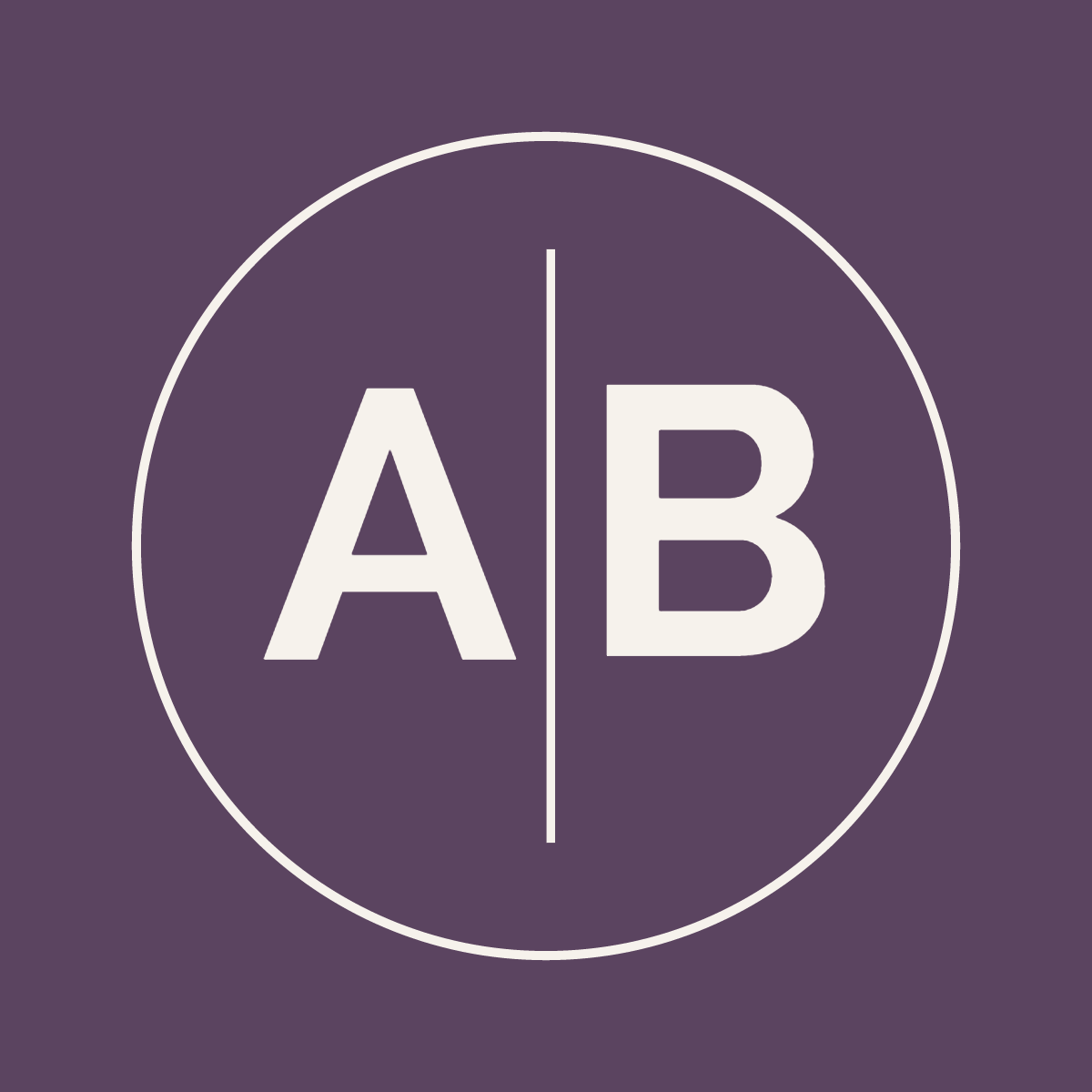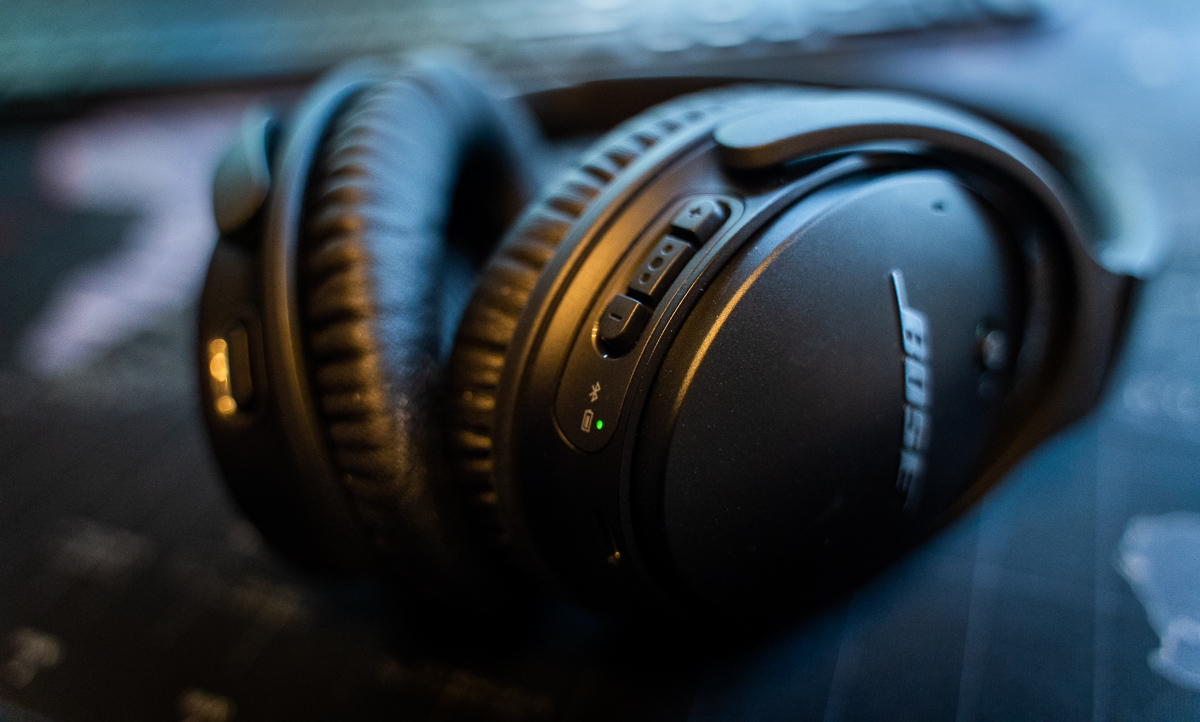RAJAR released its latest MIDAS research report at the end of last week, and it’s always worth examining. A reminder that MIDAS recontacts 2,410 previous RAJAR survey listeners to dive deeper into how they listen to digital audio. RAJAR publishes a summary report on its website, although subscribers get more detailed access to the data.
This blog just looks at that summary data.
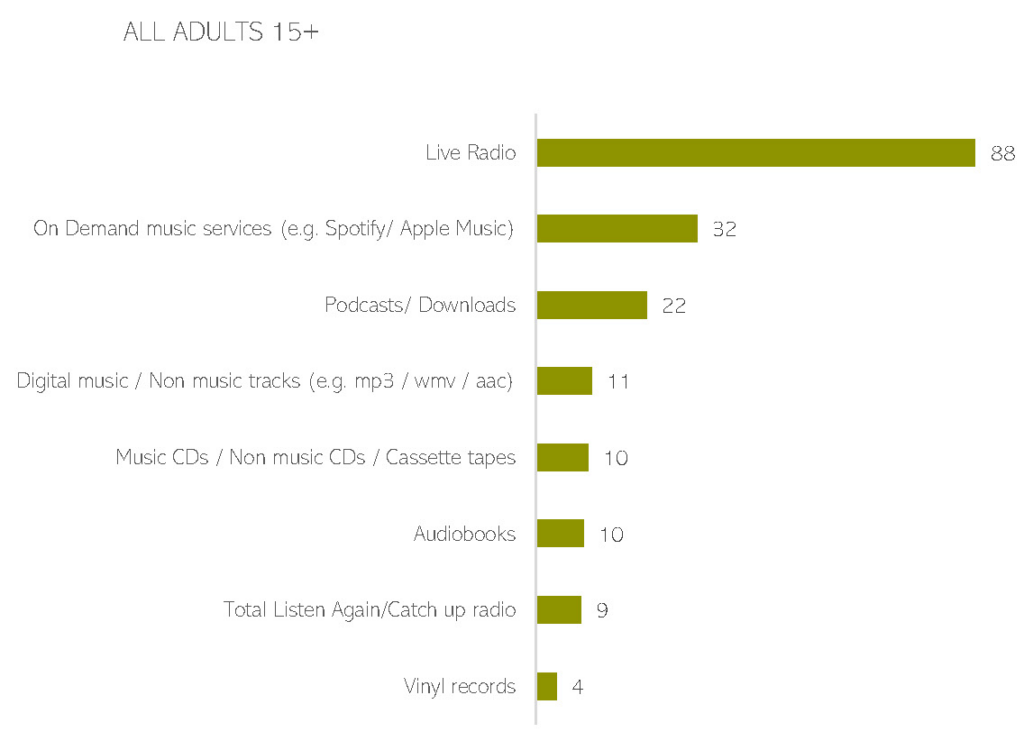
It’s worth noting at the outset that this data is not directly comparable with other source of audio data, including RAJAR’s own quarterly releases. That’s because it’s based on that one-off sample. It’s also worth mentioning that of course some apps, like Spotify, offer multiple forms of audio. This survey compares the audio being consumed, not the app being used. So a Spotify user might be using it for music, podcasts and audiobooks.
We can quickly see that radio remains the dominant form of audio in the UK in terms of reach.
The report breaks out these forms of listening by age-ranges:
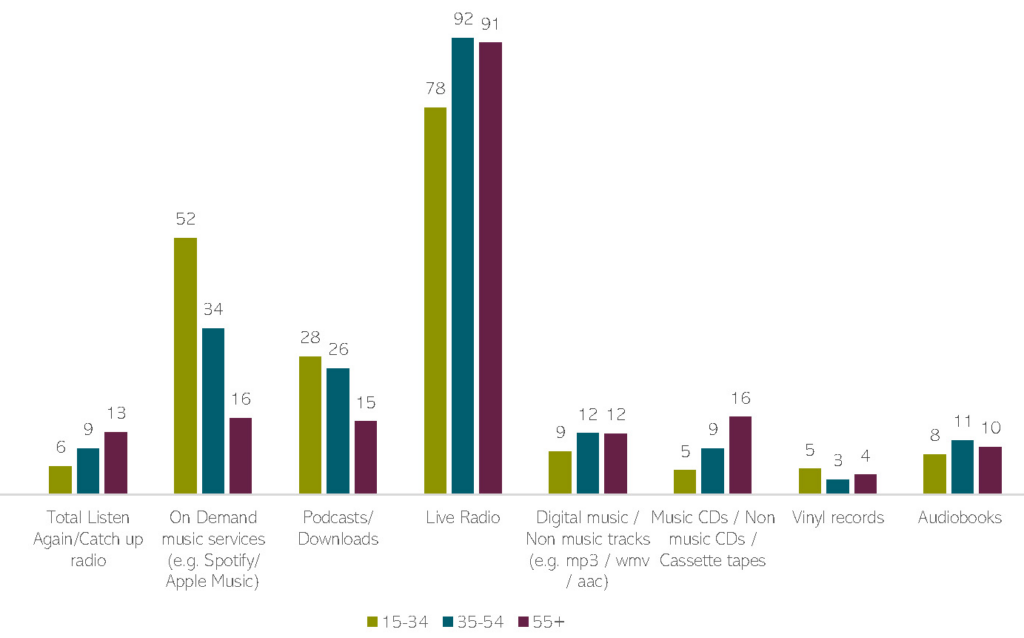
This chart clearly shows that radio listening skews older, whereas On Demand Music Services like Spotify skew significantly younger. Podcasts also skew younger, but not by as much (older audiences were already used to using catchup radio services like BBC Sounds and before that, iPlayer Radio). But Audiobooks are interesting – showing a very close evenness across all age groups.
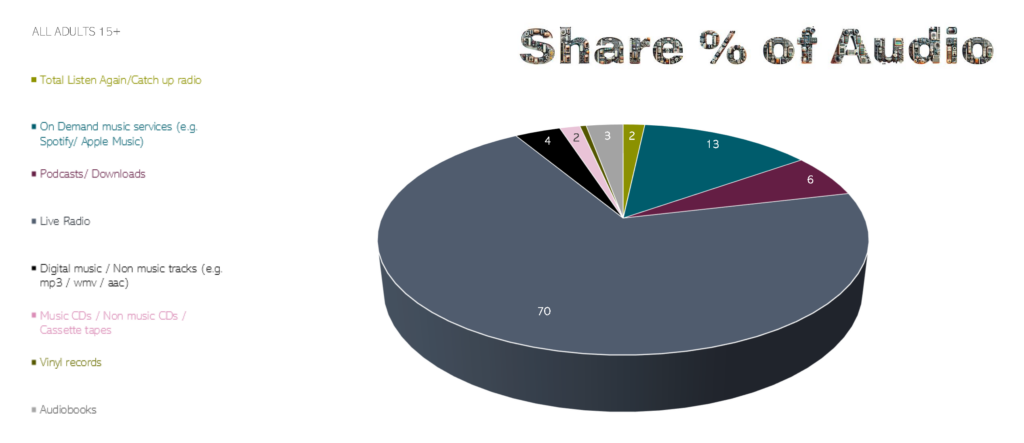
Examining the share shows radio to still be the dominant audio medium overall, with 70% of time spent listening. On Demand Music Services are next biggest, back at 13% of time.
But of course this pattern is markedly different depending on the age-group:
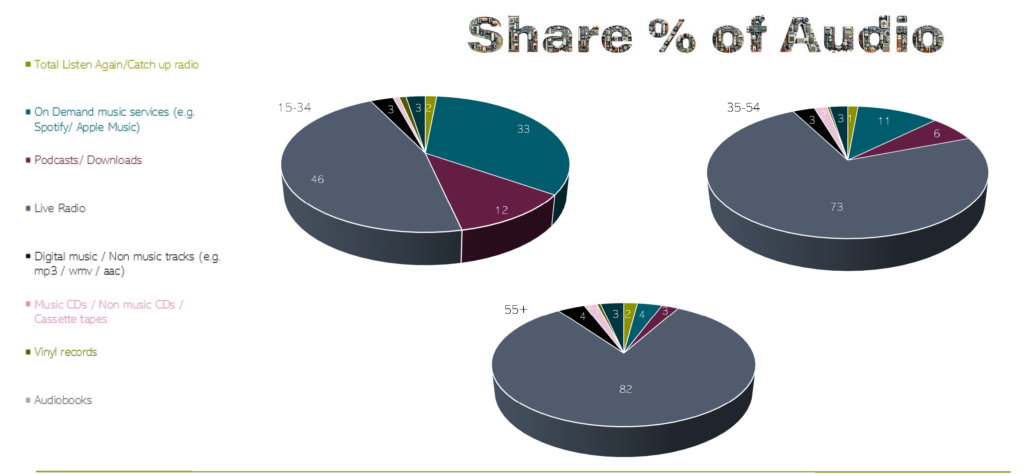
On Demand Music Services haven’t yet overtaken live radio amongst 15-34s, but at 33% compared to radio’s 46%, things are tightening up. And it might be different again were we to look at a tighter young audience – say, 15-19 year olds.
Podcast listening amongst 15-34s is also double the overall population average in terms of time spent listening. And of course, the reverse is true for 55+ listeners.
The good thing about the MIDAS survey is that RAJAR has been running it for a number of years now, so you can look at longer-term trends.
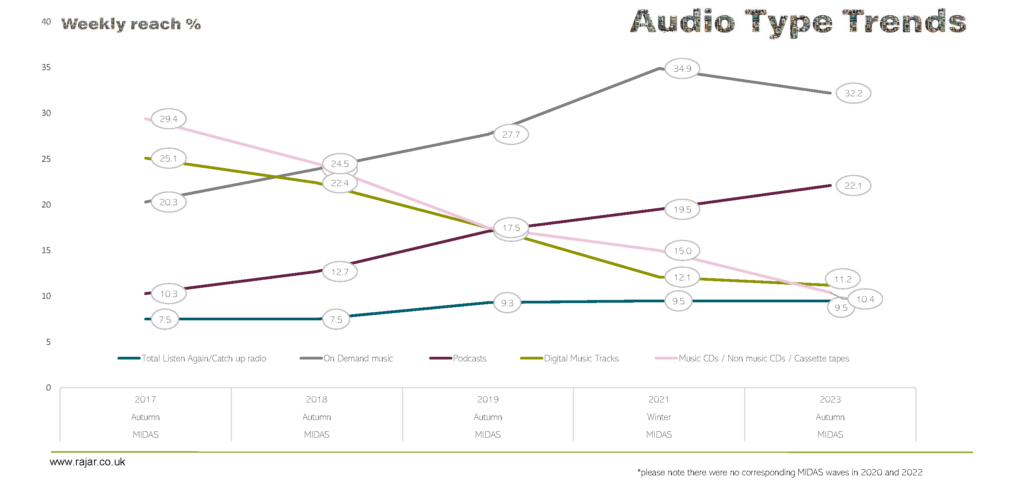
The chart above shows listening in each of the Autumn surveys since 2017, although there was a pandemic-affected period meaning we don’t have 2020 or 2022 surveys, and we got a Winter 2021 survey.
The first thing to note is that live radio has been excluded from this chart, to make the other forms of audio a little clearer. The next thing to note is that reach seems to have peaked for On Demand Music Services. It’s certainly too soon to make any big claims from this, and the previous jump may have been pandemic-induced. But it’s certainly something to keep an eye on. Certainly there are ad-supported offerings, or services that come bundled with things like Amazon Prime. But is there a finite number of people willing to spend £10.99 a month on music?
Then there’s the trend for podcast listening, which is showing steady growth across this chart. As a lot of other reports based on this MIDAS report have noted, the number of podcast listeners in the UK has more than doubled since 2017.

Time spent listening follows the same trends – a slight dip for On Demand Music Streaming Services, and continued growth for Podcasts.
And while time spent listening to CDs is declining, Digital Tracks is holding up. Is this Bandcamp?
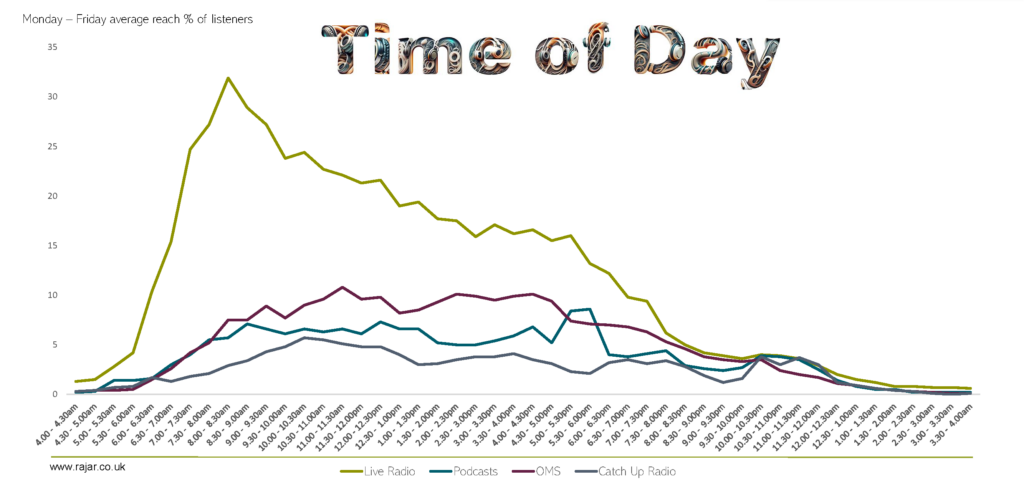
The time of day chart is always useful to look at. The radio pattern is very much the standard radio listening model, with a breakfast peak at around 8:00am, then solid daytime listening. In the past, you might have expected a bit of a second peak during “evening drive”, but other forms of audio are perhaps invading this space.
On Demand Music Services are certainly strongest during daytime – with people wanting to control their own music during their workday. But the trends perhaps suggest that these listeners still find other forms of audio more useful in the morning and evening. Perhaps catching news, sport, and so on.
Podcasts also accompany a lot of people during the day, and there is definitely an uptick at around 5:00pm with people listening to podcasts for their journeys home (or perhaps they’re just out walking the dog or going for a run?).
All forms of audio even out at around 10pm – traditionally a good time for speech radio (although this isn’t broken out here). But podcasts are popular too around this time.
The MIDAS report has more information than I’ll cover here, so it’s worth going away and looking at all of it. But I did want to finish on some of the other Podcast findings that were reported.
The report says that 94% of people listen to podcasts alone, and that 63% of people listen to more than half of the podcasts they download.
The most popular device to listen to podcasts is a phone (76% share), followed by laptop/desktop (11%), tablet (6%), smart-speaker (4%) and mp3 player (2%).
The most popular place to listen is at home (61%), followed by in-car (13%), commuting/travelling (12%), and at-work (8%).
The most popular genres, in order, were Comedy, News & Politics, Sports and True Crime, with listeners claiming to that “Word of Mouth” and “Social Media” were the most common ways to find new podcasts.
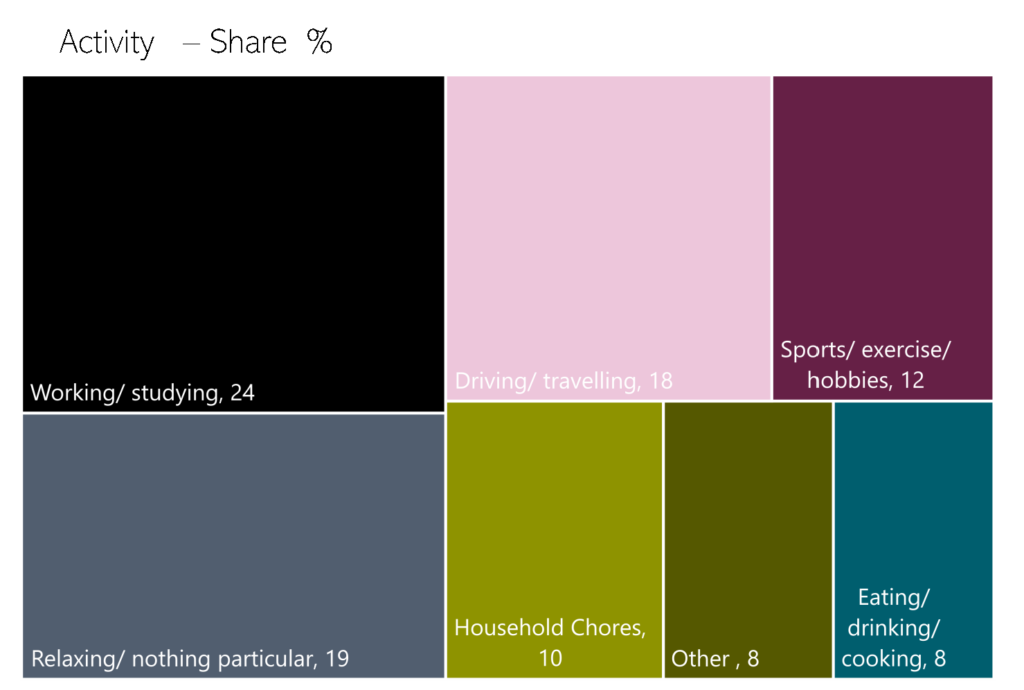
As to what listeners are doing when listening to podcasts, Working/Studying is the most popular (I wish I could both work and take in a podcast at the same time!). Relaxing and various forms of travelling are next most common, followed by sport/exercise/hobbies and household chores.
All data is from RAJAR. The MIDAS survey Autumn 2023 fieldwork was conducted over two weeks in September 2023 with a sample of 2,410 former RAJAR respondents aged 15+, completing a 7-day online diary.
